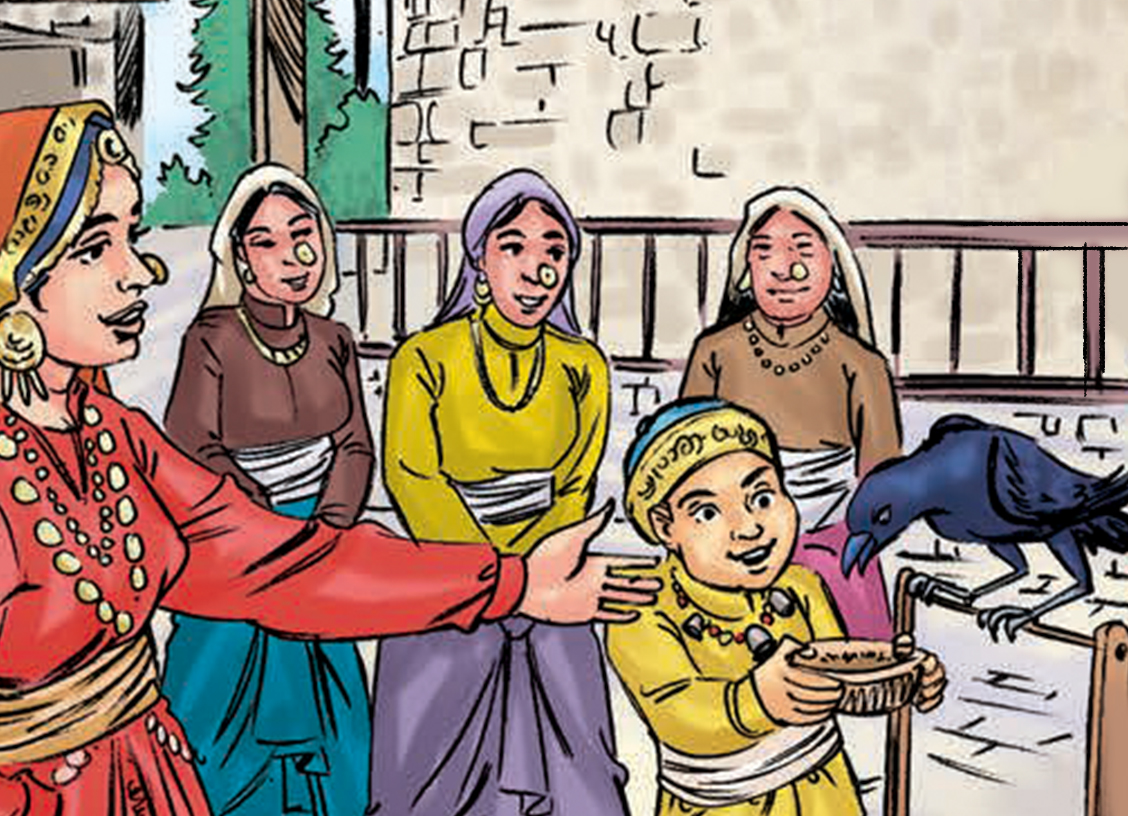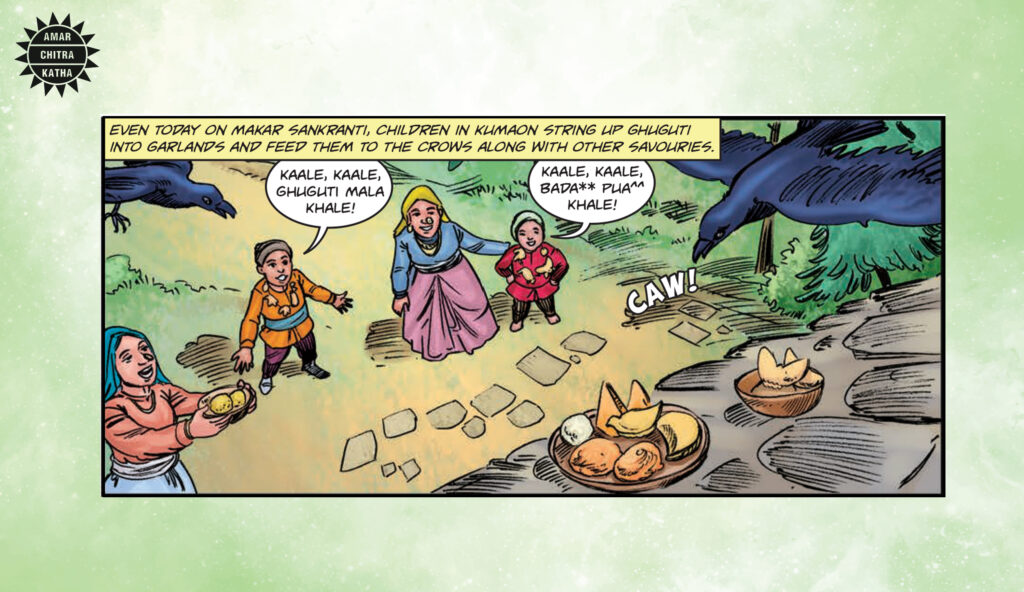Makara Sankranti in Kumaon
- January 14, 2025


Makara Sankranti in Kumaon
- January 14, 2025
By Vijita Mukherjee
Makara Sankranti is celebrated with a lot of enthusiasm in the Kumaon region of Uttarakhand. On this day, known as Uttarayani or Ghughuti (घुघुति) in Kumaon, the sun enters the zodiac sign of ‘Makara’ (Capricorn), and starts to move to the north (uttar). With a change of season, the migratory birds start returning to the hills.
In keeping with the spirit of sharing, Khichadi (a nutritious mixture of pulses and rice) is given in charity. People also take ceremonial dips in holy rivers and participate in the Uttarayani fairs across the region. They make sweetmeats out of flour and jaggery, shape them into drums, pomegranates, shields and swords and deep fry them in clarified butter or ghee . These are strung together with foxnuts and worn as necklaces and maybe an orange or two in the middle! Early in the morning children wear these unique garlands and chant “Kale Kauva” to attract crows and other birds and offer them tidbits from their edible necklaces! Kale Kauva means ‘black crow’. This gesture welcomes all the migratory birds coming back to the hills after their winter sojourn in the plains.
To receive more such stories in your Inbox & WhatsApp, Please share your Email and Mobile number.

The children come out calling the crows with various versions of this rhyme on their lips:
Kale Kale,
Bhol bate aile,
Bor puwa khale.
Le Kauva bara,
Mai ke de sunu ghara,
Le Kauva dhal,
Mai ke de sunu thai.
(Come crow, come everyday from tomorrow to enjoy bara and puwa. Take the bara and give me a pitcher full of gold. Take the shield and give me a golden plate.)
Amar Chitra Katha wishes you all Happy Makara Sankranti!
Read a folktale about a Kumaoni Sankranti in our title Legend and Lore, on the ACK Comics app!
To receive more such stories in your Inbox & WhatsApp, Please share your Email and Mobile number.

Comic of The Month
The Naval Journey of India Book I
This book is the first of a three-book series that takes a deep and detailed look at India's Naval History and a deep insight into the lives of our men and women in white. But any series on the Indian Navy has to start at the very beginning - exploring India's celebrated maritime history. Join our little hero, Bharat, and his grandfather, Commodore Sagar, as they sail into the deep blue waters of time. Book I of The Naval Journey of India takes a sweeping look at India's maritime endeavours, how the seas impacted us over millennia and how the oceans made us who we are.